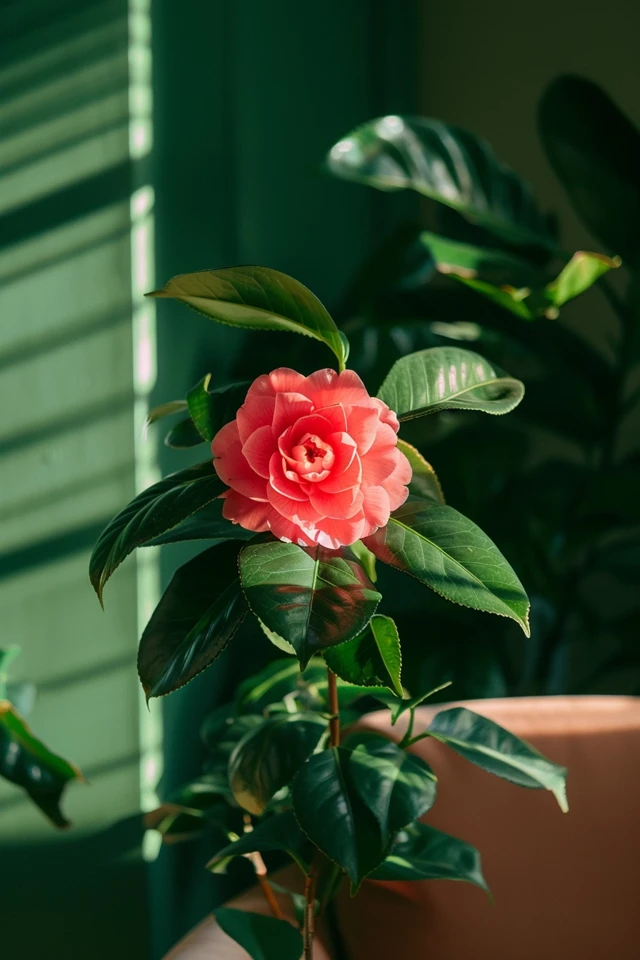Growing camellias from cuttings is an exciting way to propagate these stunning flowering plants and create new additions to your garden. Camellias are known for their vibrant blooms and glossy evergreen foliage, making them a favorite among garden enthusiasts.
If you’re interested in learning how to root camellia cuttings, this guide will provide you with valuable tips and techniques to ensure successful propagation. Whether you’re a seasoned gardener or a beginner, these methods can be easily implemented to expand your camellia collection.
Camellias can be propagated through various methods, including air layering, grafting, starting from a cutting, and growing from seed. Each method has its own advantages and considerations, so it’s important to choose the right approach based on your goals and the characteristics of the parent plant.
Key Takeaways:
- Propagating camellias from cuttings is an effective way to create new plants.
- Methods like air layering, grafting, and starting from a cutting produce plants identical to the parent.
- Growing camellias from seed can result in new varieties, but the plants may not resemble the parent.
- Choosing the right method and providing appropriate care are crucial for successful camellia propagation.
- By propagating camellias, you can expand your collection and enjoy the beauty of these stunning blooms.

Camellia Propagation Techniques
When it comes to growing camellias, one of the most rewarding methods is propagating them from cuttings. This allows you to create new plants that are identical to the parent plant, ensuring you can enjoy the same beautiful blooms. In this section, I will guide you through two common propagation techniques: growing camellias from cuttings and rooting camellia cuttings.
Growing Camellias from Cuttings
Growing camellias from cuttings is a popular and effective technique for propagating these stunning plants. The best time to take cuttings is in early July when new growth is robust. Look for bottom or side limbs with a length of three to four inches.
- Carefully make a half-inch “V” shape cut at the bottom of the cutting. This cut will help promote root development.
- Dip the bottom end of the cutting in rooting hormone. This will further enhance the chances of successful root growth.
- Plant the cuttings in a rooting tray or a larger pot and ensure they are watered regularly.
- Protect the cuttings from extreme weather conditions throughout the summer and fall.
- In early spring, transplant the well-established cuttings to their permanent location in your garden or a larger pot. Be sure to provide them with adequate space to grow.
By following these steps and providing the necessary care, you can successfully grow new camellia plants from cuttings.

Rooting Camellia Cuttings
Another effective propagation technique for camellias is rooting camellia cuttings. This method is typically carried out in early May, after the flowers have faded in the spring.
“To root camellia cuttings, you’ll first need to create an inch-long wound on a limb.”
Here’s how to root camellia cuttings:
- On a limb, create an inch-long wound using a clean, sharp knife or scissors. This wound will serve as the entry point for root development.
- Soak a piece of sphagnum moss in water and rooting hormone for a few minutes.
- Wrap the soaked sphagnum moss around the wound, making sure it is securely covered.
- Wrap aluminum foil around the moss to hold it in place and create a protected environment for root growth.
- Leave the wrapped limb in place until November. During this time, keep an eye on the moss moisture and ensure it remains damp, but not overly saturated.
- In November, carefully remove the air layer and plant it in a pot.
- Eventually, the rooted cutting can be transplanted outside, allowing it to thrive and grow into a mature camellia plant.
Both these propagation techniques require patience and careful monitoring. By following these methods, you can successfully propagate your own camellias and expand your collection of these stunning flowering plants.

Propagating Camellia Plants
Propagating camellia plants can be a rewarding process, allowing you to create new plants from existing ones. It is important to choose the right method based on your desired outcome and the characteristics of the parent plant.
While growing from seed can result in new varieties, it is not the best choice if you want plants that resemble the parent. Instead, methods like taking cuttings or air layering are better for preserving the characteristics of the parent plant.
Regardless of the method chosen, careful attention to watering, temperature, and light conditions is necessary to ensure successful propagation. With patience and proper care, you can propagate beautiful camellia blooms and enjoy the process of growing and expanding your camellia collection.

